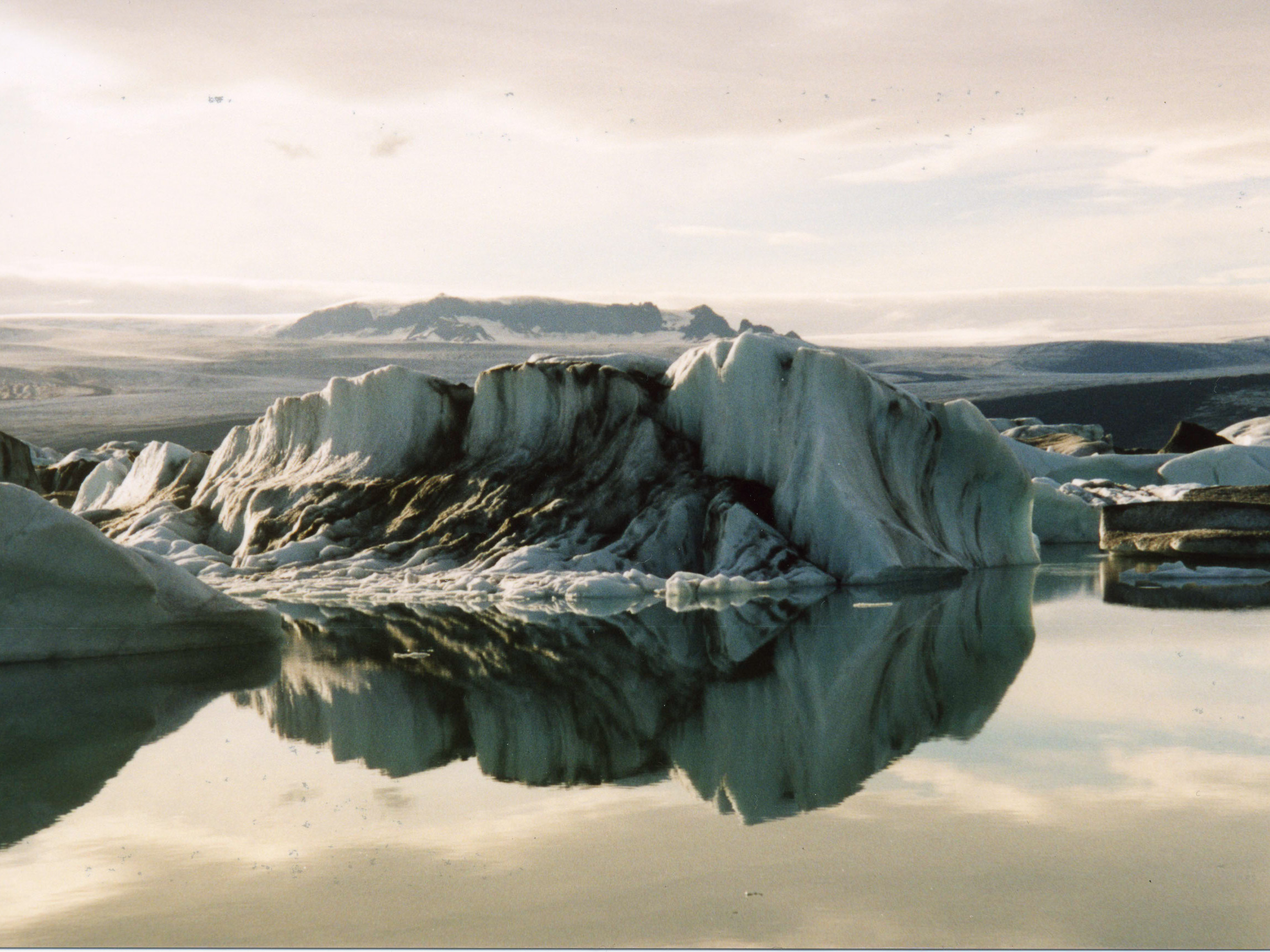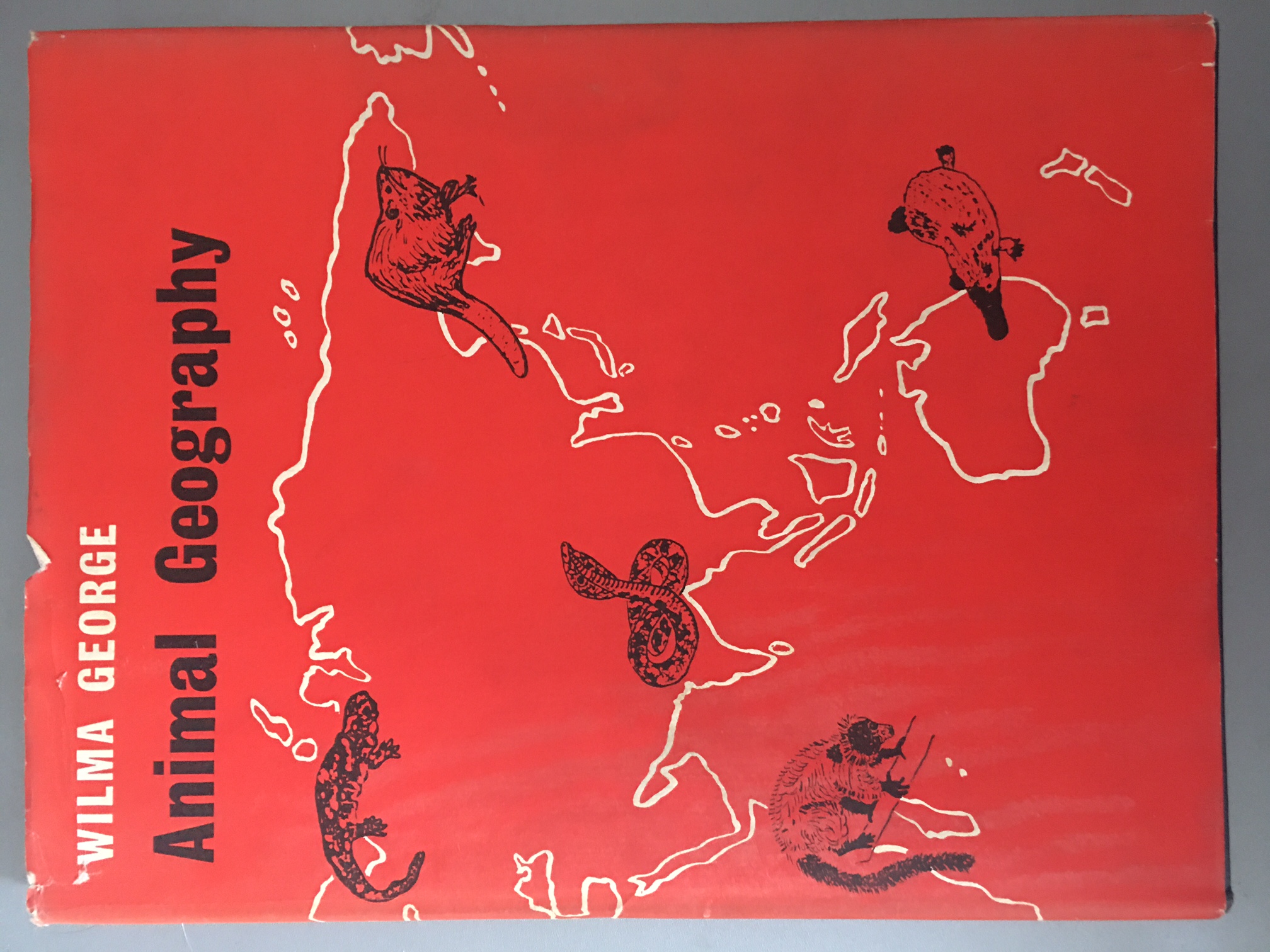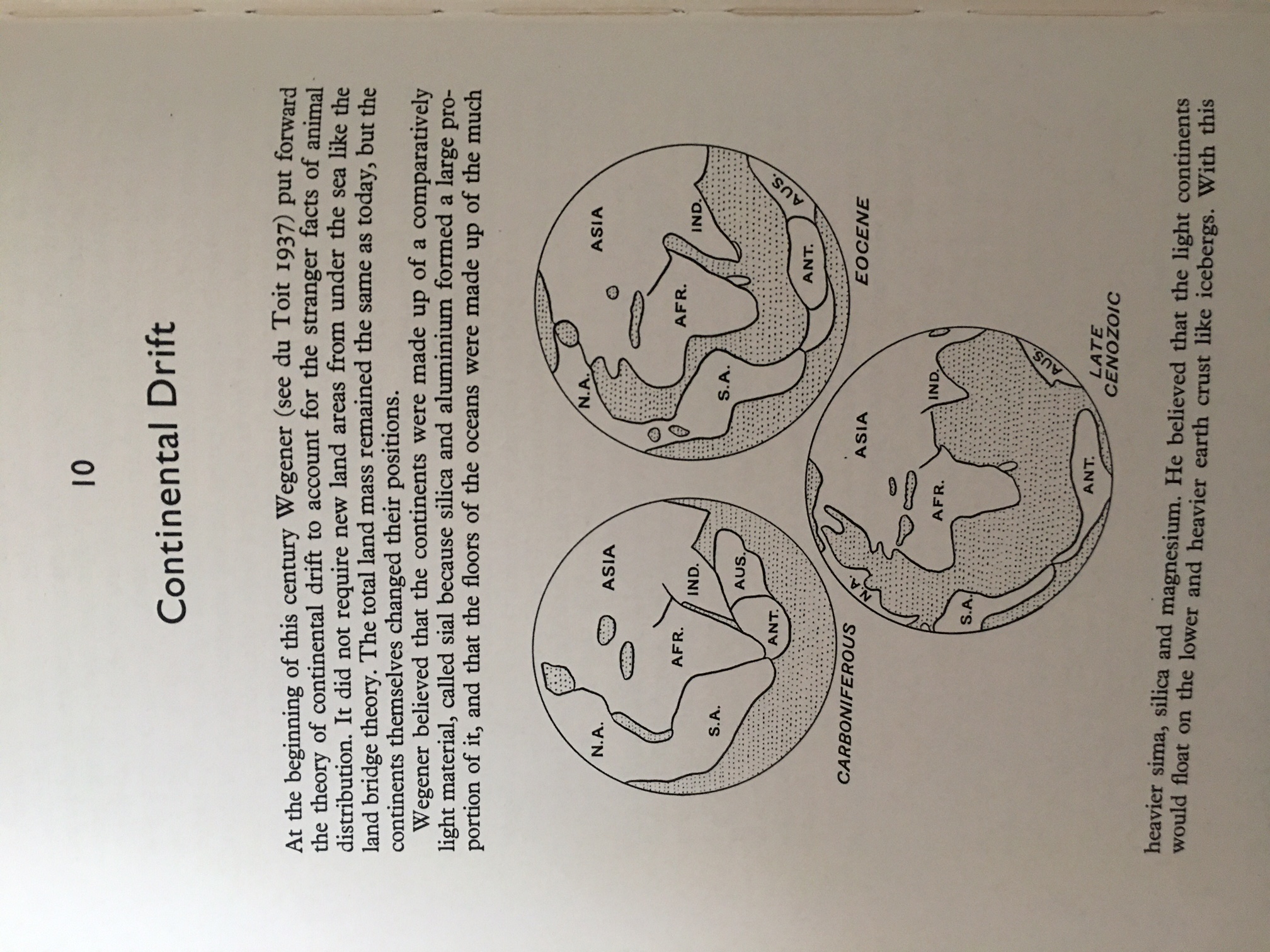Section 2 -- Background
In this section I will provide some background regarding my interest in the environment.
My career has been in Construction, initially primarily in Roads and Bridges and latterly Railways. My roles, as a Quantity Surveyor, were not specifically environmental but did stray into that area from time to time.
The interest in the environment is not career focused but has been there from a young age and persists today. Not as an activist or as a protestor, but how as an individual I can make small changes to my lifestyle to reduce my impact on the environment in which I live. That can be as little as taking public transport instead of the car where practical or keeping a car as long as possible, as there is a lot of embedded carbon in a car, and prematurely changing and swapping to an electric vehicle would be counter productive in terms of cost and carbon. Or as much as adding as many PV Solar Panels as will fit on my roof.
Little steps of action cumulate to make more change than just talking about the issues.
The start of my interest in the environment
The start of my interest in the environment
The start of my interest in the environment
At a relatively young age I began to have an interest in the environment in which we live.
I am defiantly not an older Greta Thunberg in any way shape or form. Total respect to her.
I was something of a swot at secondary school. I remember a school Prize Giving Assembly where after my name was called and I bounded up the stairs, two at a time, onto the stage. I was later told off, (gently) as it lacked decorum and was not visually attractive. I was tall for my age and somewhat gangly, but in hindsight I don't think that was the lesson.

Tectonic Plates Theory has grown up a lot since then, and is probably generally accepted. At that time, less than thirty years after it was first expounded, it was all very new.
The reason for selecting this particular book was not Continental Drift as I think this was the first place I read about it. It was because of my interest in animals and their classification. How and why the family groups came about and what separated them.
Whilst the Double Helix DNA discovery was before this book, and 'although scientists have made some minor changes to the Watson and Crick model, or have elaborated upon it, since its inception in 1953, the model's four major features remain the same yet today.' However, DNA in Species Identification was not common until several decades later.
Even before secondary school I had started to collect information regarding animals and how they were classified with the intention of writing a book on the subject. I still have the box of information I collected, all paper in those days. I never wrote the book as there are other books which are much better than I could have done, from more knowledgeable people than a school kid. Also, it has become something of a movable feast as more becomes known about animal families, thanks in part to DNA and also Paleogenomics. For instance is a Hyrax still the closest living relative to an Elephant?
Fortunately, I had some good teachers who were able to expand what they taught based on interest as well the set curriculum. It may have been Mr Baldwin, the Physics teacher or Mr Angel - Geography (Last name from Facebook Group).
I recall being taught at the time that the world is a fragile place and that if the ambient temperature rose by as little as 4oC it would result in a Mass Extinction Event, not that they were called that at the time. Nor the more recent term, Extinction Level Event. (ELE).
This was enough to set me off with both an interest in animals, the environments in which they live, and which we share, and the wider "how is the planet".
That figure of 4oC appears to have risen to 5.2oC or sometimes 6oC. I am not sure how much the latter figure is driven by the politics of providing hope for the future to avoid despair and anarchy, as we are sailing perilously close to exceeding the threshold.
Several decades after I was at school, David's school had a evening lecture about past Mass Extinction Events, and of course a discussion about the possibility of one in the not to distant future due to Global Warming.
To update that somewhat, below is a photo taken when I was at the top of Kilimanjaro in May 1979.
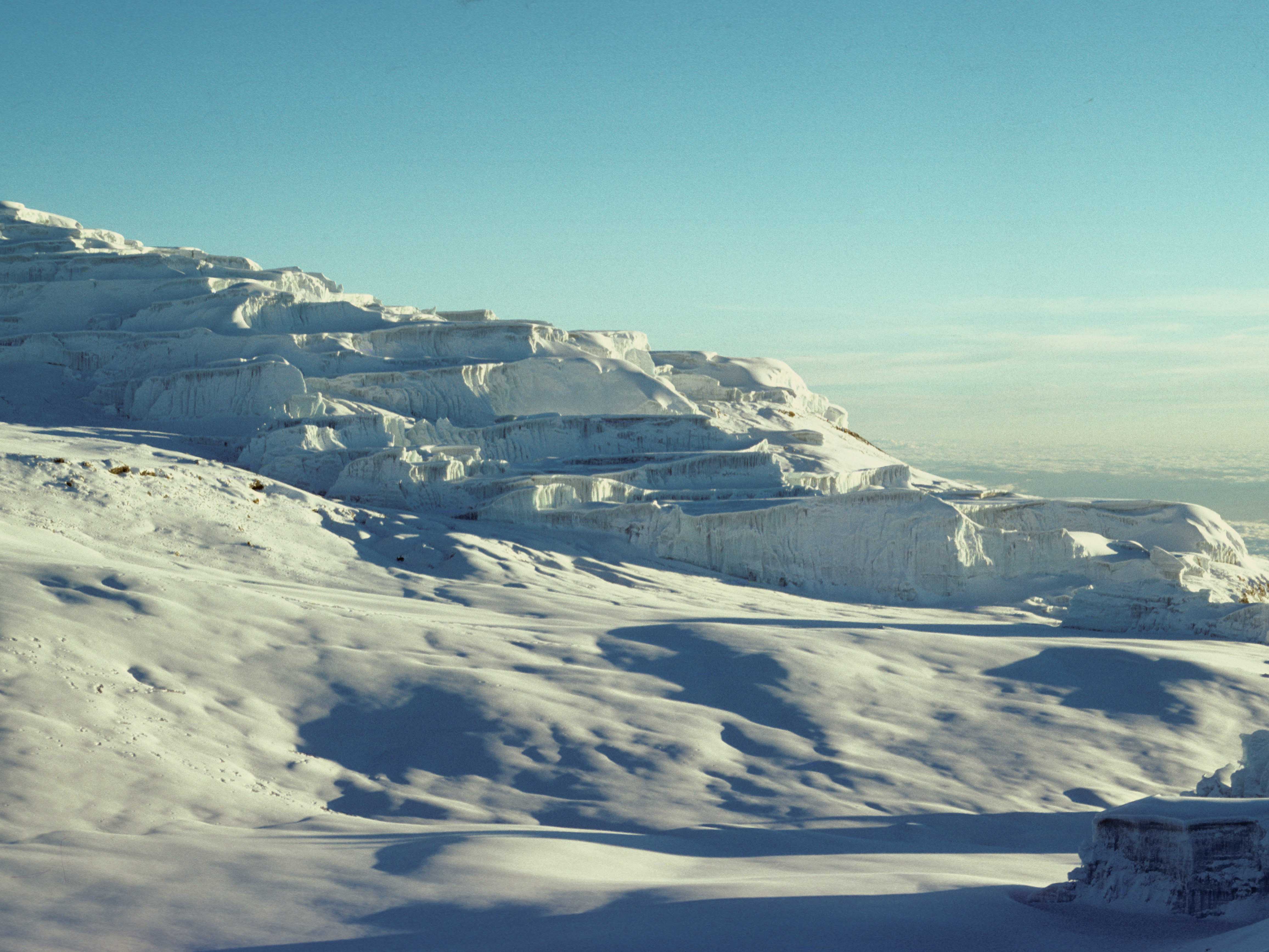
Part of the permanent ice cap and glazier, taken from Gilman's Point. That was than, and this is now, and this. A stark difference!
In August 2014, my son David climbed Kilimanjaro, and here are some of his photos, as a comparison. 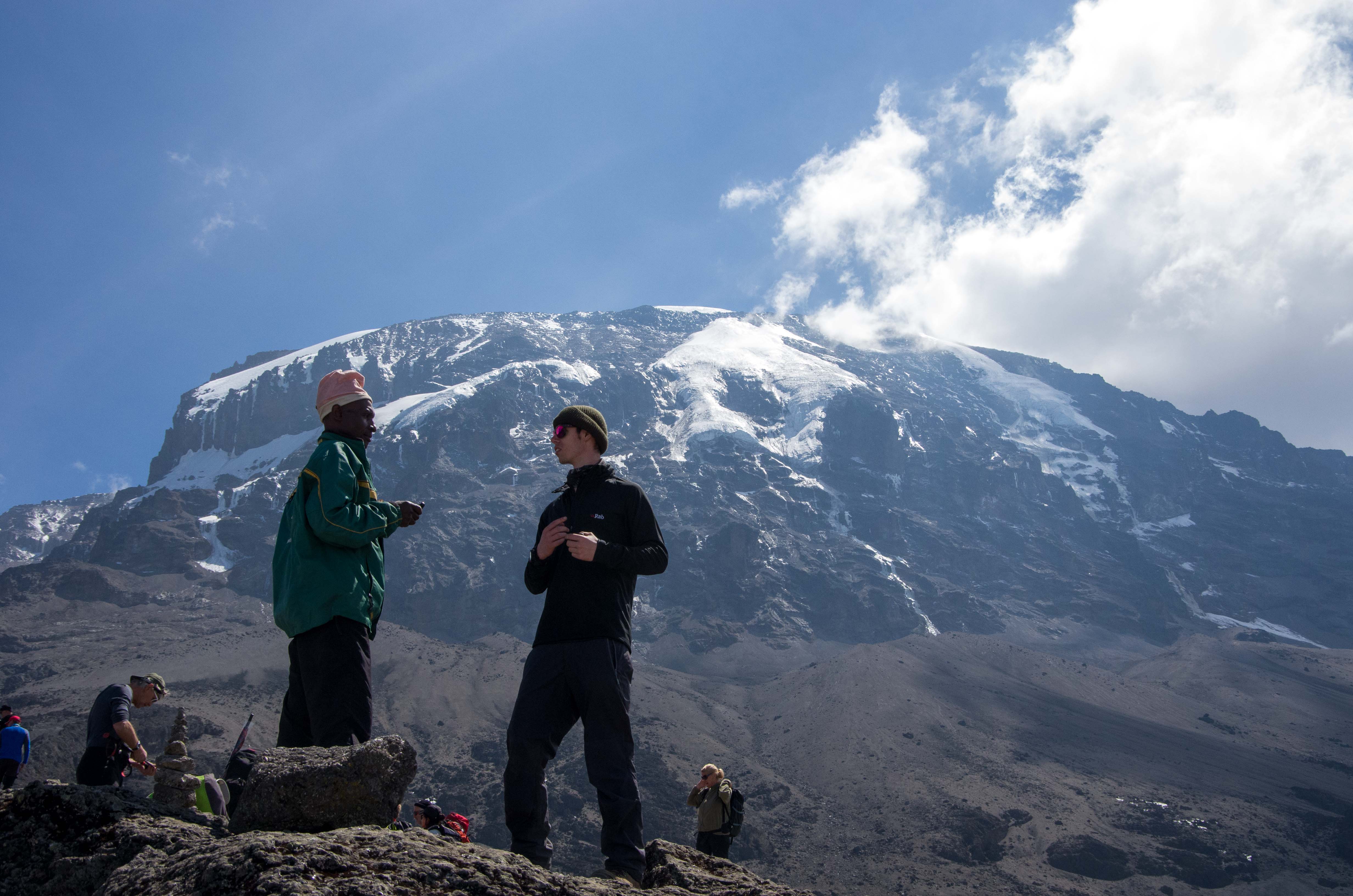
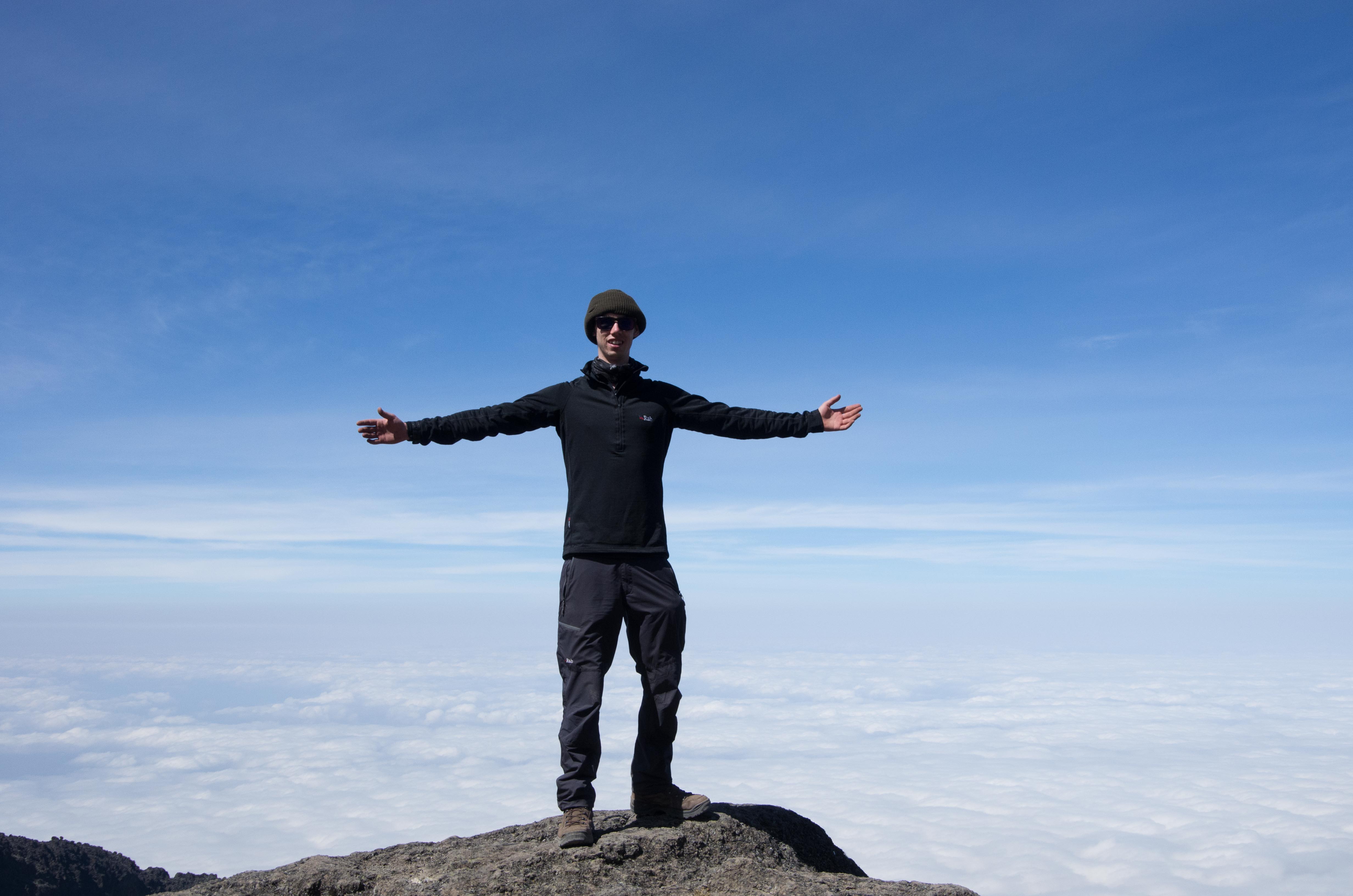
There was a benefit. David got all the way to Uhuru Peak, whilst our group only got to Gilman's Point, also known as Gillman's Point. We were told that it would be dangerous to travel the additional mile on to Uhuru because of the conditions. On the return we would not be able to see properly as the cloud was already coming in. They were the guides, and local knowledge knows best. So, yes David climbed higher than I did. Ururu is 5895 / 19341 according to the photo. Gilman's is 5685m / 18652ft according to a similar photo on Google Maps. It was nothing to do with up in 3 days and down in one, just the weather on the day. I think the round trip is now seven or more days.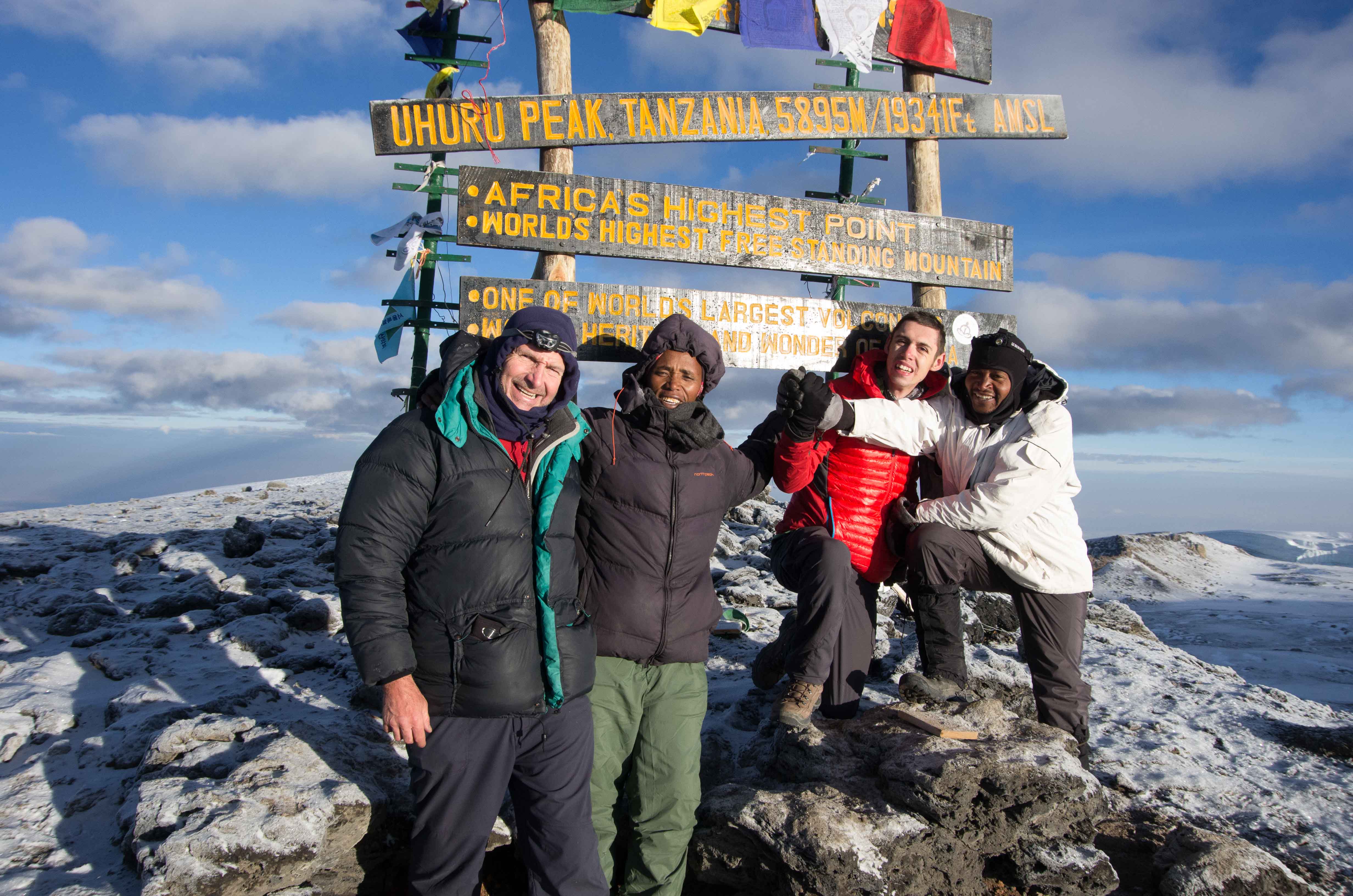
A smattering of snow and frost, and the warmer jackets have come out. Understandable, it was about 6 in the morning, and just shy of 20,000ft. The difference between May and August, the change of months between his and my trips can not explain the difference in the snow coverage. It is Global Warming melting very very old snow and ice. Permanent, no longer.
Google Maps satellite view. Where has all the snow and ice gone? Admittedly there is some left, but not much.
There are some opinions that the current Global Warming, AKA Climate Change, is the only thing stopping us from entering the well overdue, next Ice Age, but I don't think that is a widely supported view. Why the move from Global Warming to Climate Change? My thought is that Global Warming is what is happening. On average the world is getting warmer. However, that does not mean that we can go down to Brighton and get the Mediterranean experience. The initial consequence of Global Warming is an impact on the climate with both general weather changes, both better and worse, and more severe weather events. Plants can't move easily to accommodate gentle weather changes let alone extreme ones. Animals are more mobile, but not all sufficiently so. Too much change will result in another Mass Extinction Event.
Go back to the top of this tab in this section
Go to the next tab in this section
Memberships
Memberships of environmental organisations
I am a member of;
Click the names to open and see the text.
The World Wide Fund for Nature
 The World Wide Fund for Nature is an international non-governmental organization founded in 1961 that works in the field of wilderness preservation and the reduction of human impact on the environment. It was formerly named the World Wildlife Fund, which remains its official name in Canada and the United States
The World Wide Fund for Nature is an international non-governmental organization founded in 1961 that works in the field of wilderness preservation and the reduction of human impact on the environment. It was formerly named the World Wildlife Fund, which remains its official name in Canada and the United States
I have been a member for many decades, more than I care to remember. I joined when it was still called World Wildlife Fund and was focused on the preservation of endangered animals.
I think their mission is wider than that now and I consider they can be included in this list of environmental organisations.
Follow this link to see a 1 minute video.
Then use their footprint calculator to find your footprint.
This is my result today, 2021.
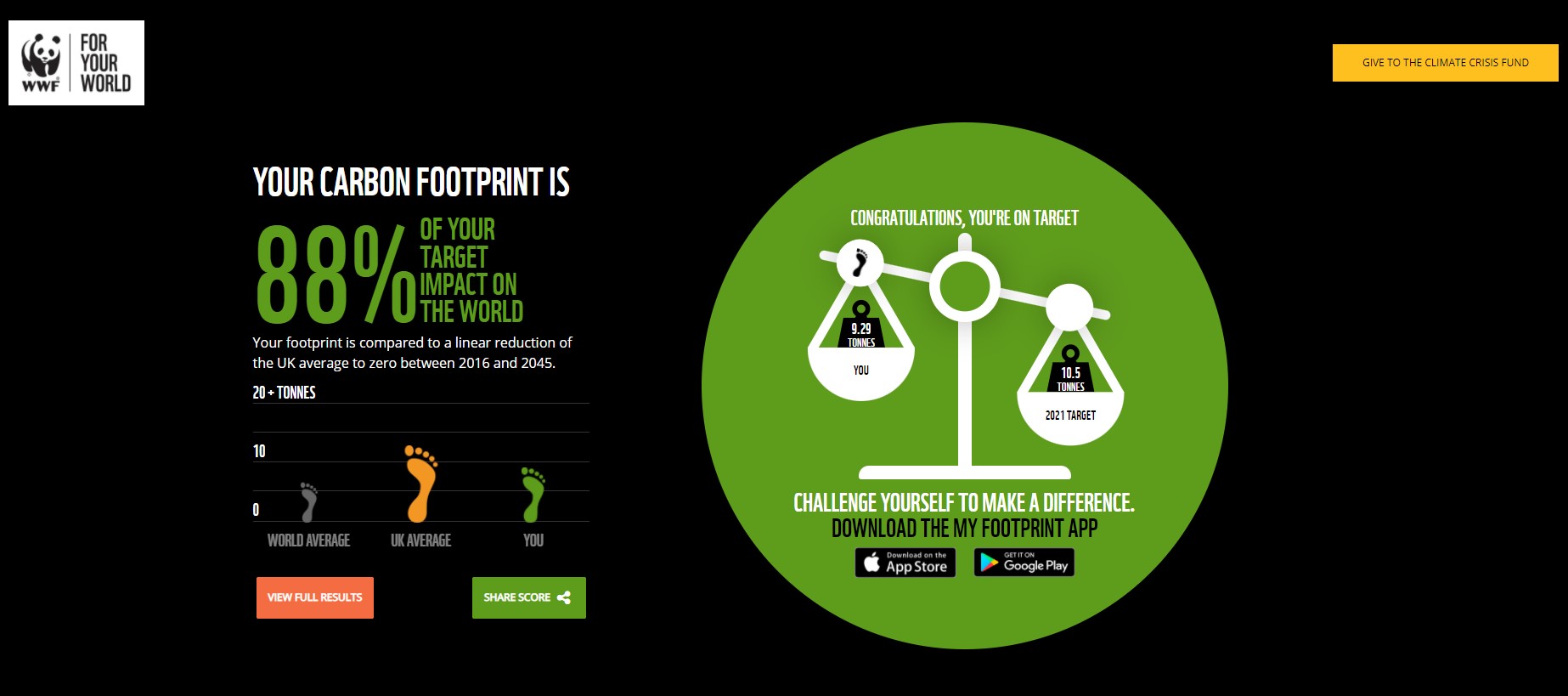
It is a screenshot, so none of the links on it work.
The Royal Society for the Protection of Birds
 The Royal Society for the Protection of Birds is a charitable organisation registered in England and Wales and in Scotland. It was founded in 1889. It is a Conservation charity.
The Royal Society for the Protection of Birds is a charitable organisation registered in England and Wales and in Scotland. It was founded in 1889. It is a Conservation charity.
The RSPB is the UK's largest nature conservation charity, inspiring everyone to give nature a home and secure a healthy environment for wildlife.
I suggest you look at the RSPB's Save energy and reduce waste at home. Who knew! Rainwater and greywater recycling together with the PV cells take us firmly into the Dark Green.
The reason for joining the RSPB, I think in the 1980's or perhaps a little before, was my interest in birdwatching. I used to live in Ipswich and I recall going to the shore line before the Orwell Bridge was built and watching the waders. I also remember being on a RSPB Reserve in Suffolk, with my wife to be at the time, reeds all around, camera levelled, and being asked, "Are you taking a photo of a Reed Warbler?" Perhaps he had just heard it sing, and thought I had spotted it. "No, just the Nuclear Power Station. The lighting on it is superb." I don't think he was impressed with that.
Bird watching and photography bring two hobbies together. However, you don't have to go to a RSPB Reserve to get the shots. I took the photo below in our local park.
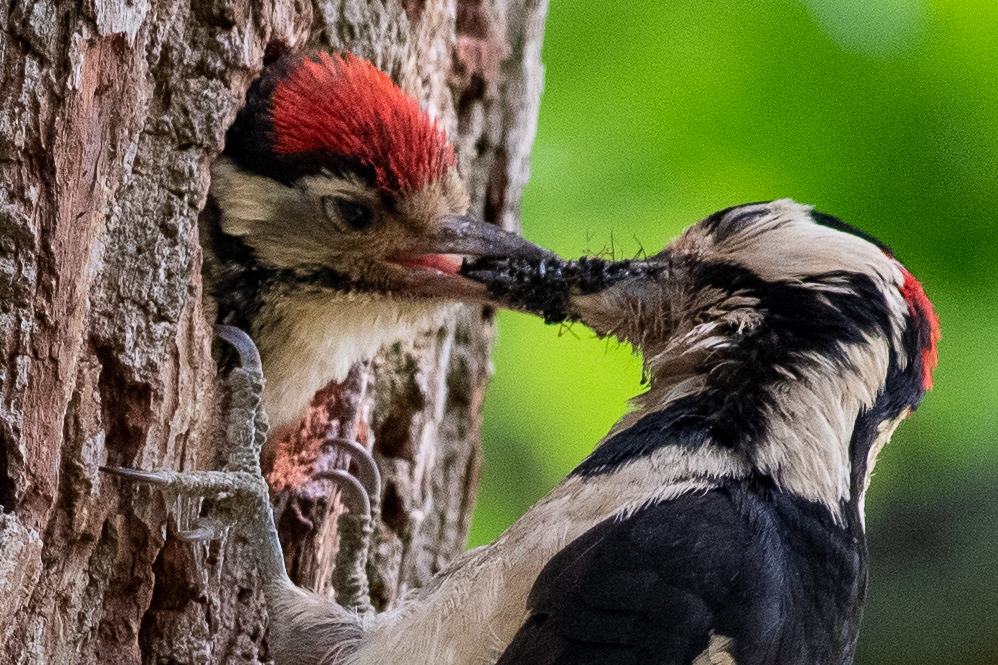
Woodland Trust
Your text...
Go back to the top of this tab in this section
Go to the next tab in this section
M25
The M25 Motorway
This is a bit of a stretch to include this here.
I should at this point fess up to having been involved in the construction of part of the M25 (Ringway 4 /NOR). It was at the time of building not part of the M25, but became a feeder road. The project was the A405 to Hunton Bridge. The Rickmansworth Bypass was built as a bypass but to motorway standards. When it was changed to a motorway, all that had to happen was green road signs were changed to blue ones. Did it get less protests and less media time by being built as a bypass?
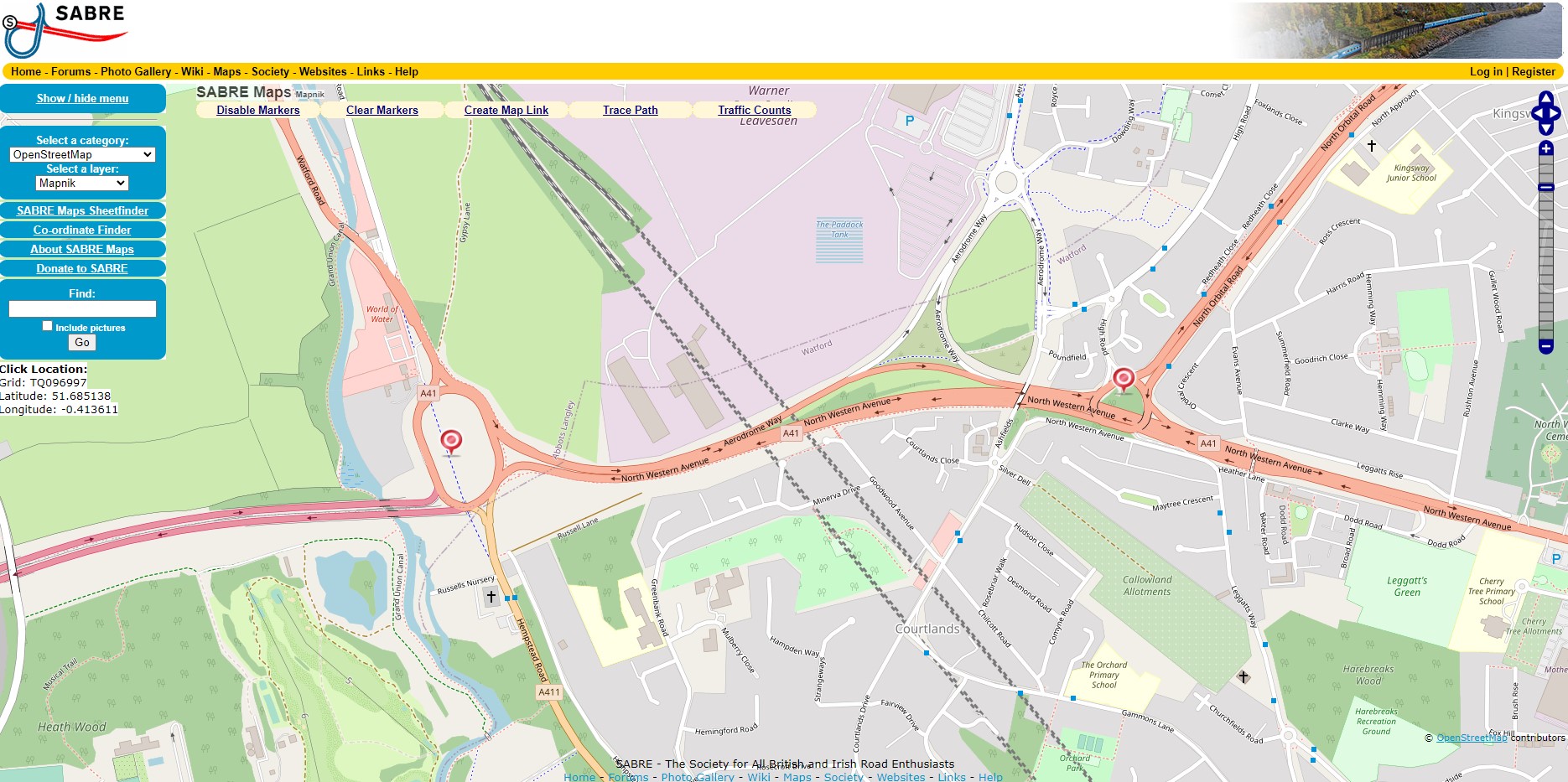
The site compound was at the junction of the A405 - North Orbital Road and A41 North Western Avenue. I was working for Percy Bilton Ltd at the time and left to travel to Asia in 1978.
Upon my return to the UK in 1980 I worked for Cementation Construction Ltd on the M26 and M25 Chevening Junction based in Wrotham, Kent.
Regarding the Ten Square Metres of Surrey, this was a form of protest about the proposed route of the M25. However, the protest failed. Sometimes though, good things come to fruition. The built route was shorter than the protesters preferred route. The M25 has been a victim of it's own success with very substantial traffic flows. The shorter route for so many cars and trucks amounts to very significant carbon and other pollutants reductions.
More recently, projects like HS2 do have an adverse environmental impact, but these are dwarfed by the potential benefits, including environmental gains. Another contentious project is the Lower Thames Crossing. The proposals include cutting through ancient woodlands. Sometimes I would consider that the demolition of housing would be preferable, but this would not be politically acceptable, even if double the number of homes were provided. Even poor housing stock seems to be sacrosanct. It does of course cost more to demolish and rebuild houses, in terms of money, but what of the other costs. It is all a balance, and it is not always clear where that balance point should be. The Kent Messenger (Newspaper) KentOnline has an article about Lower Thames Crossing.
There is a map of the route of Ringway 4 / SOR / M25 here. Covering both the Leatherhead area and M25/M26..
Ten Square metres of woodland in leafy Surrey
Many years ago I read an advert about selling a small plot of woodland near Leatherhead. At the time I did not know where Leatherhead was. Reference to paper maps provided the answer. At the time Leatherhead was the dominant town of the area. Now it is Epsom, and at the time I obviously had no idea that years later I would be living in Epsom.
A phone call to the advertisers and arrangements were made together with details of how to get there from Leatherhead town centre. Another look at the maps to plot a route.
The allocated day arrived and it was not too difficult to find. There were a number of cars parked at or near the gate.
The land hand literally been pegged out into ten metre by ten metre plots. Access was by walking across somebody else's plot, and for other's, across my plot. It was advertised as for recreational purposes, which was my interest.
However, it appears that the reality was somewhat different. At least it was not a scam, fraud. It was an attempt to frustrate the building of the proposed M25 by severely complicating the land purchase process. One owner of a wooded field of ten hectares or one thousand different owners of 100 sq m.
From an anti road perspective it may seem a valid ploy, but in reality it just increases the cost to the public purse. It is very unlikely to result in the road being diverted or cancelled. Much more money will have already been spent on devising the route, and it will already be a compromise of all the different potential routes.
I did not pursue that opportunity to buy some recreational woodland, with questionable access.
In June 1971 the M25 Action Group launched its campaign to divert the 'southern' route away from Leatherhead and instead cut across Brooklands racing track.
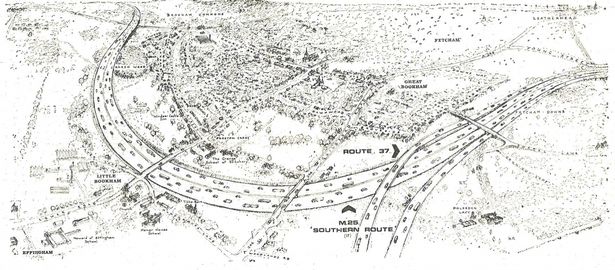
The sketch shows a proposed alternative route avoiding the tight squeeze threading between Leatherhead and Ashtead. Instead it proposes to go southward through Norbury Park / Fetcham Downs, skirting Great Bookham, and turning back towards the north at Little Bookham, near the Grange, towards Bookham Common, then re-joining the official proposed M25 line.
It was one of 39 public enquiries the beleaguered motorway scheme would face before it was finally opened some 15 years later.
In September 1973, the group’s campaign tumbled like a clump of tarmac and Geoffrey Rippon, secretary of state for the Environment, rejected its alternative southern route.
The M25 Action Group’s chairman, Sir Ronald Harris, was unequivocal in his response to the secretary of state’s decision.
“One of deep disappointment.”
Arthur Durham, then chairman of Leatherhead Urban Council, was of similar sentiment and chirped that the inspector had given more concern to the peace and quiet of Effingham and Little Bookham than he had to those of Ashtead and Leatherhead.
“They will suffer far worse noise now the northern route is chosen.”
I think it was, at the time, a case of "not in my back yard" than an interest it the environment. However, the M25 corridor between Leatherhead and Ashtead does suffer from a poorer air quality than surrounding areas, not unsurprisingly. Even if current environmental concerns were applied, would a route through Fetcham Downs and Bookham Common have gained traction against the Leatherhead route.
The greater argument is however, for the road on environment grounds. Given the growth of road transport the emissions were destined to inevitably increase. Traffic can be modelled in a similar fashion to Fluid Dynamics. The cleaner the flow the better the outcome. Taking traffic away from normal roads which are already congested and slow moving, and frequently in densely populated areas, and putting it on cleanly flowing motorways has many environmental and commercial benefits, including air quality. Motorways obviously do take space and have an impact on that land and those living around it.
The M25 has it is now apparent been a victim of its own success, creating it's own congestion, but arguably better than putting the same volume on the surrounding normal roads. Consider driving along the A25, perhaps through Dorking or Westerham.
The solution is not to constrain the infrastructure. It is more appropriate to look at the root cause, the amount of traffic and the source of propulsion. Change the culture of the country to reduce traffic and change to electric or hydrogen as the source of energy, to improve air quality and reduce congestion. Return to working close to home. Greater use of public transport and human power, walking and cycling. Changing the patterns of society.
Delaying the building of such infrastructure just delays the realisation of the benefits. A worse environmental impact, and yes sometimes an ancient woodland, or a few hundred homes have to be scarified for the greater benefit of both the environment and society.
Go back to the top of this tab in this section
Go to the next tab in this section
Sand Martins
Sand Martins Saved
Another road building project with Cementation Construction Ltd. This time the A45 Ipswich bypass and then the A12 Copdock Bypass, also near Ipswich. The A45 was the approach to the Orwell Bridge, built at the same time. The route has be re-designated the A14.
Sand Martins nesting in a sand cliff.
The above photo is not one of mine nor of the actual sand cliff but it is indicative of the situation. The above photo, 'Sand martins are gregarious birds that nest in large colonies. Photo: Felix Alred - Credit: Felix Alred', comes from this site which is an interesting read.
I was working on a road building project near Ipswich in Suffolk as a Quantity Surveyor. One of my responsibilities was the earthworks.
It was not dis-similar to the video below apart from the scrapers of the day were CAT 637, I think the suffix might have been C.
If you are interested in knowing more about scrapers you could watch the video on the link and the specifications can be found here and here. Some photos of old CAT scrapers here.
You may notice from the above video that the scrapers have created a bank or cliff, which appears to be sand.
That is what happened on my site. Nothing unusual in that. It is just trimmed back to form the slope at the edge of the road and then covered in topsoil and planted.
However, we had some opportunist visitors move in. Obviously not deterred by the movement or noise.
There was talk of sheeting over the bank or digging it back to the required slope. Either way, they would become homeless.
I intervened and stated they might be protected. I would look into it.
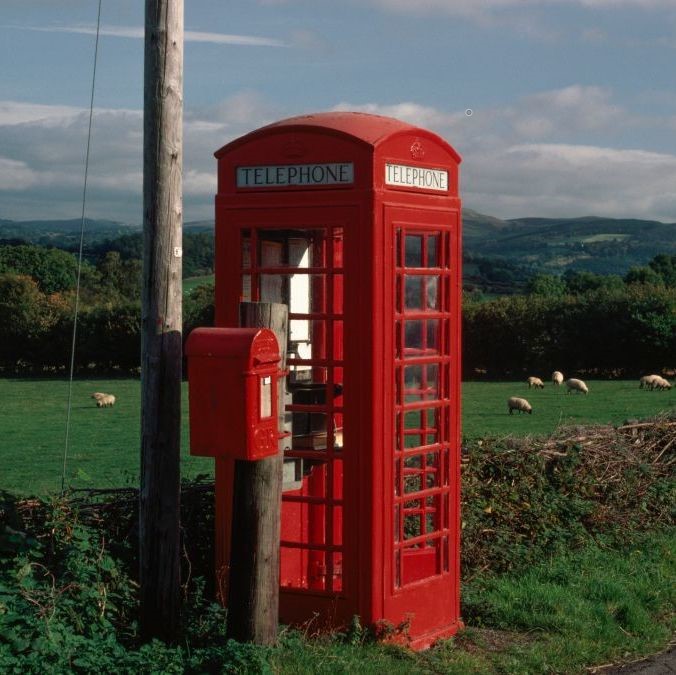 A red telephone box similar to the one near the site entranceOther potential nest sites were covered in sheeting to avoid more intrusion.
A red telephone box similar to the one near the site entranceOther potential nest sites were covered in sheeting to avoid more intrusion.
This all happened before the internet was available. At the start of the job we had lots of bags of coins to feed the local telephone box. Yes a red box, on the corner by the road. No mobile phone, no internet, no instant information.
Fortunately, the office by the time of the incident had had land lines installed.
I made a few phone calls to directory enquiries and then a few more phone calls, including one to the RSPB.
If I recall correctly, at the time, the birds were not protected, but nesting sites were protected, therefore safe.
However, there were exceptions. Construction sites were one of those exceptions.
The location of the site entrance, as it is today, from Google Maps, with no sign of a phone box.
We could of ignored the nesting birds and carried on the works according to the law at that time.
We didn't do that. With some judicial re-planning and changing of sequence, we let them be, but covered the area, as soon as they had left.
Construction does not always have to be hard hearted. We worked with the client to come up with an acceptable solution to all, including the birds.
The Sand Martins left without a thank you, without paying their rent.
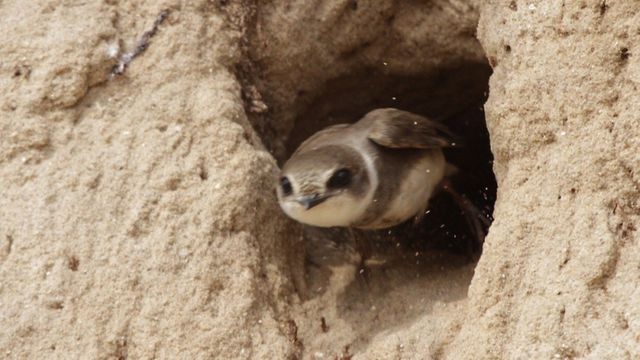 Sand martins nest in Suffolk's soft coastal cliffs. Photo: Felix Alred - Credit: Felix Alred
Sand martins nest in Suffolk's soft coastal cliffs. Photo: Felix Alred - Credit: Felix Alred
Go back to the top of this tab in this section
Go to the next tab in this section
Estimating
RIB
BIM
Carbon parameter














